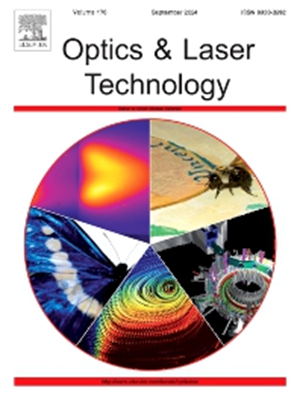Low-temperature solution-processed amorphous-Ga2O3 optoelectric synapses for neuromorphic computing
IF 4.6
2区 物理与天体物理
Q1 OPTICS
引用次数: 0
Abstract
Optoelectronic synaptic devices present a promising approach to address the limitations of the von Neumann architecture. In this work, the amorphous gallium oxide (a-Ga2O3) optoelectronic synaptic devices were prepared by using a cost-effective sol–gel technique at a relatively low temperature of 400 °C. The a-Ga2O3 devices exhibit an exceptionally wide bandgap and a stable, persistent photoconductive effect, allowing for the effective emulation of short- and long-term plasticity, paired-pulse potentiation, and pulse time-dependent plasticity akin to biological synapses. A digital image recognition method and a clothing image recognition method based on the LeNet-5 neural network model also were developed, achieving recognition rates of 97.8 % and 78 %, respectively. These findings are expected to contribute to the advancement of artificial synaptic devices, neural networks, and computing systems capable of optoelectronic operations.
求助全文
约1分钟内获得全文
求助全文
来源期刊
CiteScore
8.50
自引率
10.00%
发文量
1060
审稿时长
3.4 months
期刊介绍:
Optics & Laser Technology aims to provide a vehicle for the publication of a broad range of high quality research and review papers in those fields of scientific and engineering research appertaining to the development and application of the technology of optics and lasers. Papers describing original work in these areas are submitted to rigorous refereeing prior to acceptance for publication.
The scope of Optics & Laser Technology encompasses, but is not restricted to, the following areas:
•development in all types of lasers
•developments in optoelectronic devices and photonics
•developments in new photonics and optical concepts
•developments in conventional optics, optical instruments and components
•techniques of optical metrology, including interferometry and optical fibre sensors
•LIDAR and other non-contact optical measurement techniques, including optical methods in heat and fluid flow
•applications of lasers to materials processing, optical NDT display (including holography) and optical communication
•research and development in the field of laser safety including studies of hazards resulting from the applications of lasers (laser safety, hazards of laser fume)
•developments in optical computing and optical information processing
•developments in new optical materials
•developments in new optical characterization methods and techniques
•developments in quantum optics
•developments in light assisted micro and nanofabrication methods and techniques
•developments in nanophotonics and biophotonics
•developments in imaging processing and systems

 求助内容:
求助内容: 应助结果提醒方式:
应助结果提醒方式:


